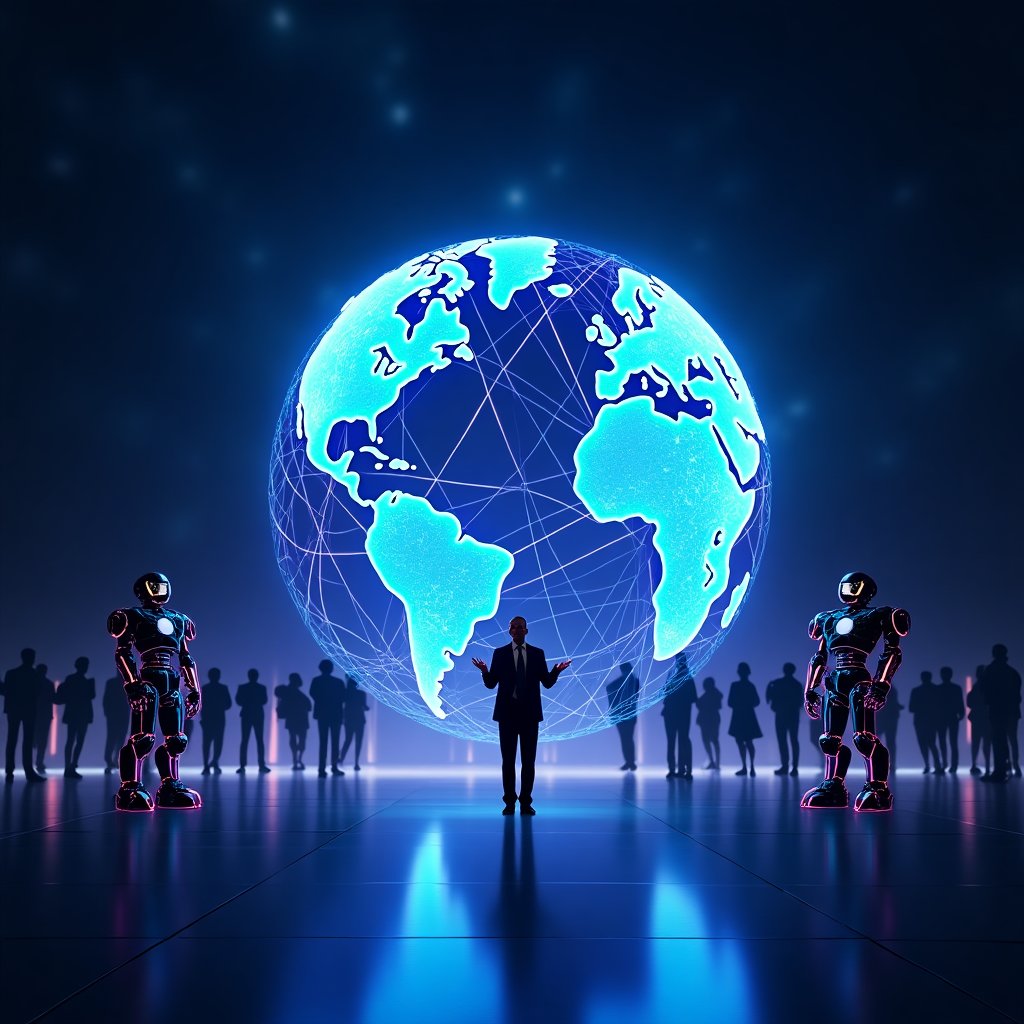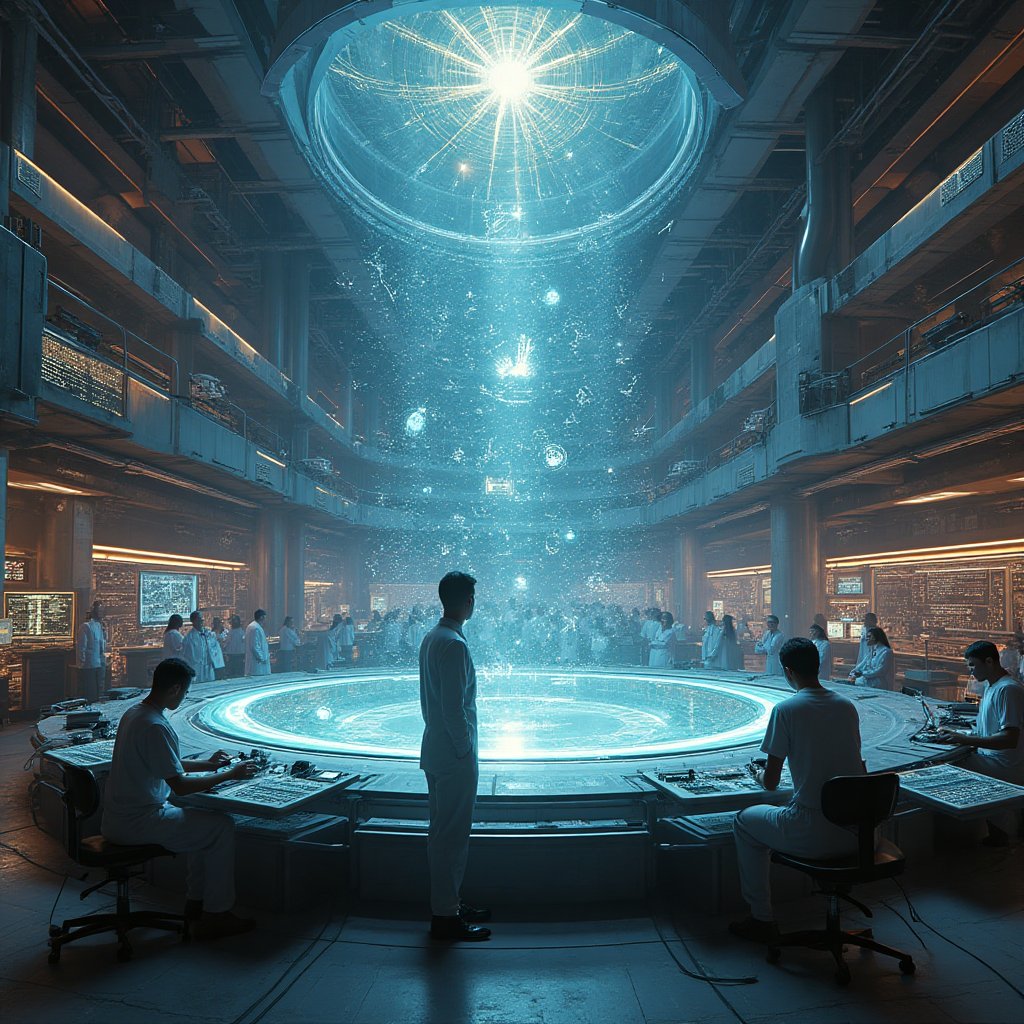Imagine an AI so advanced it can simulate the entire physical world. Sounds like science fiction, right? Well, it’s not. Google DeepMind is already working on it. In a groundbreaking move, Google is pushing the boundaries of artificial intelligence with a system designed to replicate the physics of our planet. This isn’t just about creating smarter chatbots or generating pretty pictures. This is about paving the way to Artificial General Intelligence (AGI)—a machine that can think, learn, and reason like a human. But how close are we to this reality? And what does it mean for the future of AI, robotics, and even video games? Let’s dive into the details, inspired by AI Revolution’s latest video.
What Is World Simulation, and Why Does Google Care?
At the heart of Google’s latest AI ambition is a concept called world simulation. Essentially, it’s about training an AI system to understand and predict the physical world. Think of it as teaching a machine the laws of physics—gravity, motion, friction, and more—so it can anticipate what happens next in any given environment. This isn’t just about crunching numbers; it’s about creating a dynamic, 4D map of reality that includes time and space.
Leading this ambitious project is Tim Brooks, a former OpenAI researcher who joined Google DeepMind last fall. Brooks and his team are working on a system that ingests massive streams of multimodal data—video, audio, robotics sensors, you name it. The goal? To build an AI that can simulate real-world physics with such precision that it could one day achieve AGI.
But why is Google so invested in this? According to Brooks, it’s all about the scaling hypothesis—the idea that throwing more data and computational power at AI models will lead to exponential leaps in intelligence. Critics argue that we’re nearing the limits of what scaling can achieve, but Google isn’t backing down. They’re doubling down, hiring top talent, and pushing the boundaries of what’s possible.
How Does World Simulation Work?
To understand world simulation, let’s break it down. Google’s approach involves combining several cutting-edge technologies:
- Gemini: Google’s next-generation large language model, designed to process and generate human-like text.
- Vo: A video generation tool that can create realistic video content from scratch.
- Genie: A foundation model that can generate playable 3D worlds from a single image.
When you combine these tools, you get an AI that doesn’t just analyze data—it creates entire virtual environments. Imagine a robot learning to walk in a simulated world instead of stumbling around in real life. Or a video game where every object behaves with near-perfect realism. The possibilities are endless.
Why Simulate the Real World?
So, why bother simulating the entire physical world? Here are a few reasons:
- Robotics: Training robots in a virtual environment is safer, cheaper, and more efficient. Instead of risking damage in the real world, robots can practice endlessly in a simulated one.
- Gaming: Developers can create hyper-realistic game worlds where every object behaves according to real-world physics. Imagine playing a game where the environment reacts to your actions with uncanny accuracy.
- Scientific Research: Researchers can use these simulators to model complex phenomena, like weather patterns or the spread of viruses, without conducting risky real-world experiments.
- Real-Time Interaction: AI systems could understand context, environment, and even body language, making them more effective in real-time conversations.
But let’s not forget the bigger picture: this technology could bring us closer to AGI. If an AI can simulate the physical world, it’s one step closer to thinking like a human.
Google’s Gemini 2.0: Flash Thinking and the Future of AI
Rumors are swirling about Google’s next big update: Gemini 2.0, codenamed “Flash Thinking Expanse 123.” According to leaks from a Google hackathon, this update could launch as early as January 25, 2025. The name “Flash Thinking” suggests faster, more dynamic reasoning—perfect for real-time simulations and decision-making tasks.
If these rumors are true, Gemini 2.0 could be a game-changer. Imagine an AI that can think on its feet, making split-second decisions in complex environments. This could be the key to integrating world simulation into everyday applications, from robotics to gaming to scientific research.
Google vs. Microsoft: The AI Arms Race Heats Up
Google isn’t the only player in this game. Microsoft is also making waves with its Copilot for Microsoft 365. Both companies are racing to make AI more accessible to businesses and consumers alike. Google recently rolled AI features into its Workspace subscription, effectively making them free for all users. Meanwhile, Microsoft is offering a pay-as-you-go option for its Copilot chat, with a premium version for those who want the full experience.
This isn’t just about competition—it’s about shaping the future of AI. By making AI tools more accessible, both companies are gathering valuable data and feedback, which can be used to refine their models and stay ahead in the race.
The Challenges Ahead
Building a true world simulator isn’t easy. Physical laws are complex, and the data required is massive. There are also ethical concerns to consider. What happens if an AI misinterprets the laws of physics? Could a faulty simulation lead to real-world consequences?
Tim Brooks emphasizes the importance of cross-disciplinary teamwork to tackle these challenges. But even with the best minds on the job, there’s no guarantee of success. As Brooks puts it, “We’re pushing the very limits of available computing power.”
What Does This Mean for You?
So, what does all this mean for the average person? For starters, it could revolutionize industries like gaming, robotics, and scientific research. But it also raises important questions about the future of AI. Are we inching closer to AGI, or is this just another hype cycle? And what are the ethical implications of creating machines that can simulate the physical world?
As we stand on the brink of this new era, one thing is clear: the future of AI is here, and it’s more exciting—and more complex—than ever.
Join the Conversation
What do you think about Google’s world simulation project? Are we on the verge of a breakthrough, or is this just another ambitious moonshot? Share your thoughts in the comments below. And if you’re as fascinated by this topic as we are, don’t forget to join the iNthacity community. Become a permanent resident of the “Shining City on the Web” and stay tuned for more deep dives into the world of AI and technology.
Like, share, and let’s keep the debate alive. The future is waiting, and it’s up to us to shape it.
Wait! There's more...check out our gripping short story that continues the journey: The Last Ember of Atlantis
Disclaimer: This article may contain affiliate links. If you click on these links and make a purchase, we may receive a commission at no additional cost to you. Our recommendations and reviews are always independent and objective, aiming to provide you with the best information and resources.
Get Exclusive Stories, Photos, Art & Offers - Subscribe Today!


























1 comment